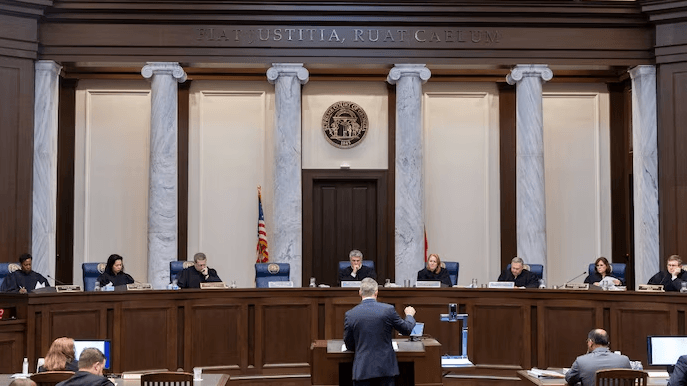Athira Sethu
Kochi, 30 May 2025
A day after an American trade court told President Donald Trump he had illegally imposed high tariffs on foreign imports, another court intervened and let the tariffs remain, for the time being.
A federal appeals court in Washington temporarily overruled the previous decision on Thursday. This means Trump’s tariffs on foreign imports remain in place pending review of the case. Trump announced the tariffs on April 2, which he had termed as “Liberation Day.
Earlier in the week, the U.S. Court of International Trade had ruled that Trump abused emergency powers. The court stated that he abused a law intended for actual national emergencies to impose tariffs on most of America’s trading partners, including Canada, China, and Mexico. The court indicated that this law was not intended for trade matters such as this.
Lawyers representing small businesses who are protesting the tariffs claim Trump preferred to act without Congress. They stated the tariffs have created severe issues, such as losing customers, suppliers, and incurring high costs. Some businesses even worry they could be forced to shut down.
Trump and his administration vehemently opposed the court. Trump wrote on social media, claiming the court ruling undermines the authority of the president. His advisor, Peter Navarro, stated that they are prepared to seek other legal means of reinstating the tariffs in case of necessity. They cited other trade laws that can provide the possibility of equivalent actions.
Current tariffs imposed by Trump remain active, maintaining the average U.S. tariff rate around 15%. Had the court’s decision remained intact, it would have fallen to some 6%. Under President Trump, the rate previously stood at around 2% to 3%.
Most nations are following this closely. Canada concurred with the court decision, while the UK labeled it an American problem. Corporations are also suffering. Large corporations such as General Motors and Honda are reconsidering their strategy, and some may relocate operations to the U.S. to save money.
Although the courts have held things up, Trump’s trade war is far from over. There are more legal fights on the horizon, and companies and governments are watching to see what comes next.



















